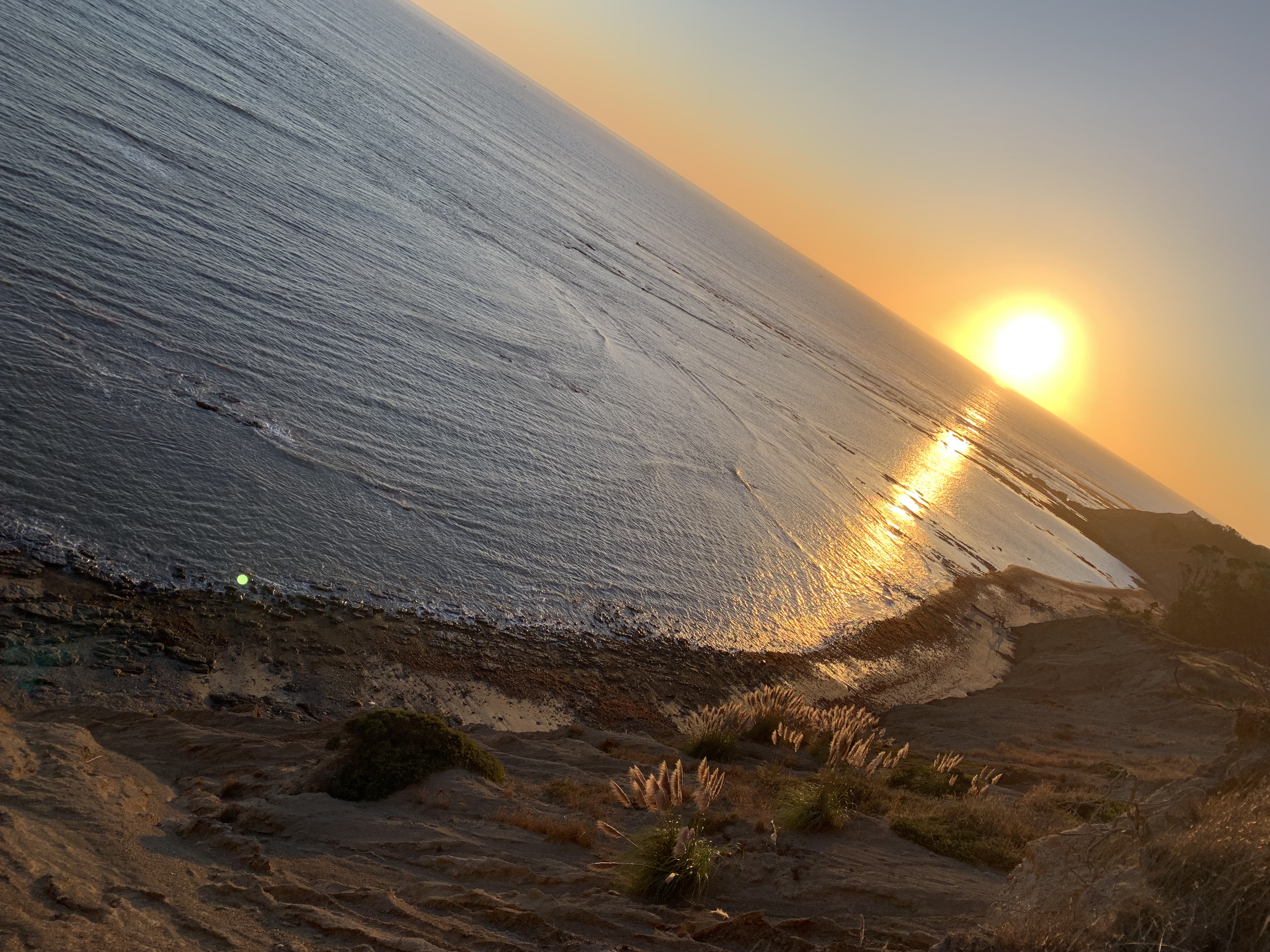Nature’s Feedback: Why Greta’s Message Resonates with Us
Most everyone who heard Greta Thunberg’s speech at the UN Summit’s General Assembly, including myself, is still reeling from her eerie words.
You have stolen my dreams and childhood with your empty words. People are dying due to climate change. Entire ecosystems are dying. We are in the middle of a mass extinction. The eyes of all future generations are upon you. ….
If you choose to fail us; we will never forgive you.
Right here, right now is where we draw the line. …
The world is waking up; and change is coming whether you like it or not.
Greta Thunberg
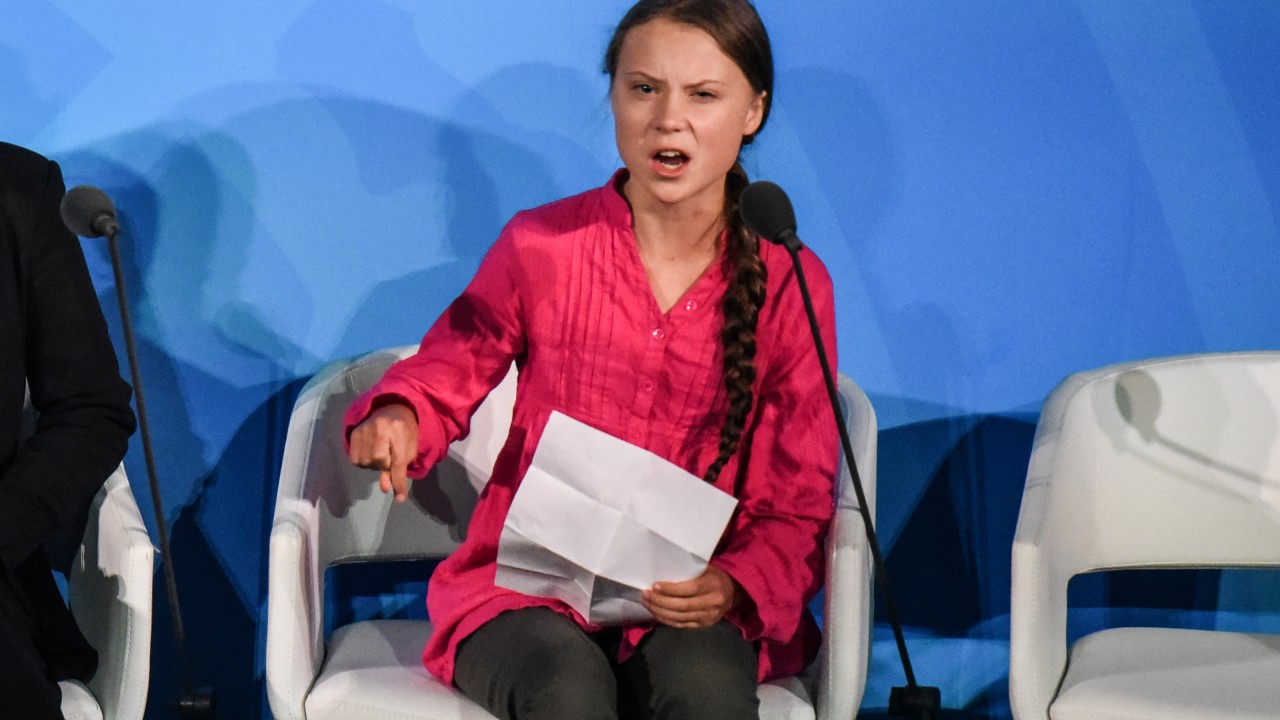
Nobel Peace Prize favorite for the 2019 Award, Greta Thunberg has awakened people- young and old to the existential threat of our lifetime; as well, the greatest opportunity for true human expression and innovative collaboration in this century.
Due to this rising youth movement, all eyes of the future are on present leadership and a swelling group of deeply concerned global citizens begin to feel the impacts of climate change on their lives. The climate narrative is now up-close and personal for many more people…including, in fact, today those of us (1 million of us) experiencing California’s historic planned black-out to mitigate the risk of repeat devastating fires caused by the ultimate fire cocktail comprised of: exposed power lines, extreme winds, dry autumn conditions, and drought-affected forest fuels. Many people are starting to ask questions, make connections among air pollution, unprecedented heat waves, anomalous natural disasters, slash-burn agriculture, deforestation, frozen peatland-sea ice-glaciers rapidly melting, coral reefs bleaching-dying, and odd migration patterns-disappearances of species in ecosystems, worldwide.
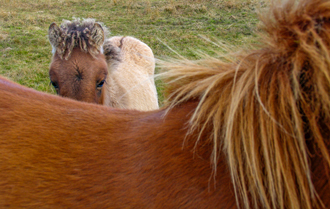
Indeed, we are witnessing real signs of ecological collapse. Meanwhile, more and more youth are rising and raising their voices, like Greta, with genuine concern, focused attention on the drivers of change, and backing for real, scalable, transformative solutions already known… and in nature, now appreciated, like a Tree. More and more people are also beginning to understand the gravitas and scale of biodiversity loss, species extinction, and degradation of entire ecosystems over less than a century of industrialization, urbanization, consumption, and generation of waste. Plastics- 1000’s of synthetic (non-nature) products-packaging- just stuff have been flushed into the ocean abyss in macro-micro-nano sizes. And, we now know this foreign influx retards the development of small fish, disrupts entire food webs, and contaminates whole communities of marine wildlife upon whom we rely for seafood. As well, in reading about and viewing in the news the tragedy of the Amazonas burning, we begin to connect the dots…fires-fossil fuels-air pollution. We begin to realize that the continuous extraction of oil-coal-natural gas and burning of fossil fuel — punctuated by more extreme, intense, and frequent forest fires (also in places with scant ecological record of previous fire—e.g. Siberian peat lands or Canadian boreal tundra/forests) are responsible for the pollution of the air we breathe…now worldwide.
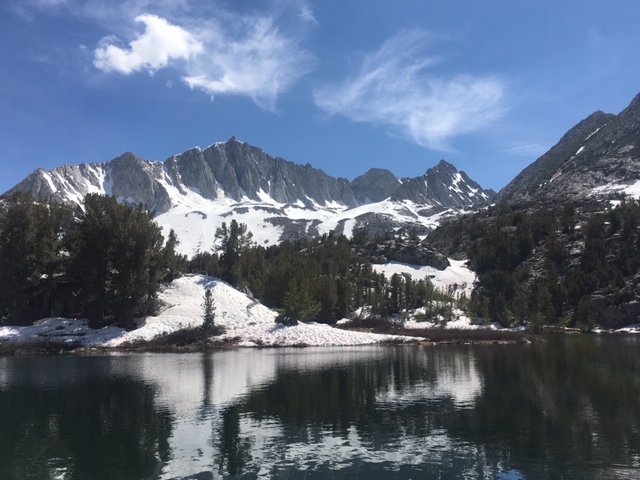
Thus, we truly begin to realize the truth… that our personal health and wellbeing is tied to the planetary health and wellbeing. And again, as written in my previous articles; ecology luminaries like EO Wilson and Tom Lovejoy… authors of the Science Advance article on the New Global Deal for Nature – all conclude that we need now to regenerate 50% of the earth’s land-oceans to its naturally-symbiotically-wild functioning state in order to recover the natural capital we have lost-destroyed-over-consumed in our current world state. We can actively reclaim the wild lands, recover marine wildlife sanctuaries, regenerate and repair damaged ecosystems, and recover our soul… but this recovery can only be accomplish if we understand that our fate and future is tied to the fate and future of the rest of the biosphere.
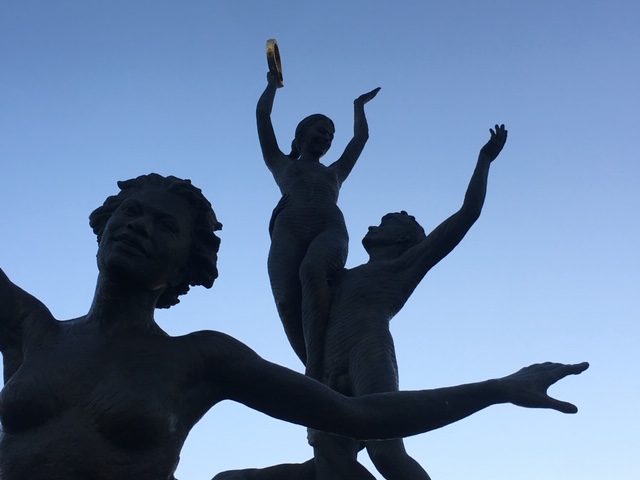
This generation of youth seems to naturally make that connection. And yet, I believe that every human being from birth—innately knows that when he breathes his first breath, it is from the earth; when she suckles her mother’s milk it is from the nutrition provided by the food web; when we feel at peace in nature, we are responding to earth’s natural rhythms that have informed the evolutionary DNA of the force of life for 3.8 billion years. We already know (and just need to remember) that the true nature of all living beings (yes, humans too) is connected to the same life force of all other living beings on earth. Thus, as species disappear and entire ecosystems begin to unravel; we — as humans not only physically feel the harmful effects of polluted air-water and more constrained natural resources…but we emotionally feel the destruction of life, our life. Again, our fate is tied to the fate of the biosphere… and the faster we wake up to that reality, reflect on our lifestyles, and each of us make the changes necessary to increase our positive, regenerative force and decrease our negative, destructive force- seek balance… the faster we will recover our world and ourselves.

This is why Greta’s message resonates so strongly with us. We intuitively know that what she says is true—that our health is connected to the health of the planet. Thus, if the planet is dying; so are we… dying. But if we are the primary driver of environmental change; then we can now make different choices and change our mind, change our environment. This is her call to action. And, if a “tipping point” majority of global citizens are so emotionally-physically-spiritually affected by the truth of her words and our current ecological paradigm; and rid ourselves of bad behaviors and unhealthy choices—good for everyone, then we might just avert planetary “tipping points” and reclaim our rightful, naturally intelligent place on earth as stewards and protectors of life. The fear, anger, angst, and outrage of youth at bad behavior– faulty infrastructure—poor policies that (as well as, other climate action advocates and committed champions of earth, who now felt empowered to share their truth) pulsated throughout the UN and heightened a sense of urgency I’ve not before seen echoed in the actual sessions, themselves. Following, many respected and first-mover world leaders made bold claims and commitments. Angel Gurria, Secretary General of OECD, clearly stated that global business has destroyed nature, but incentivized now to protect it; can be a powerful force of change. Christine LeGarde challenged and reinforced at the Bloomberg Business Summit effective carbon taxation strategies; really looking for a win-win-win solution there. Jacinda Ardern, Prime Minister of New Zealand, again promised a ban on offshore oil and a commitment to protect the Great Barrier Reef. Achim Steiner, director of UNDP (former director of IUCN and UNEP) again elegantly made clear the integral unity between a good human development strategy and a good environment regeneration strategy. Olav Elvestuen, Minister of Climate and the Environment in Norway, emphasized the importance of ocean and forest protection; committing his country to nature-based solutions on climate change, potentially 30% of the climate solution. (UN General Assembly, 2019)

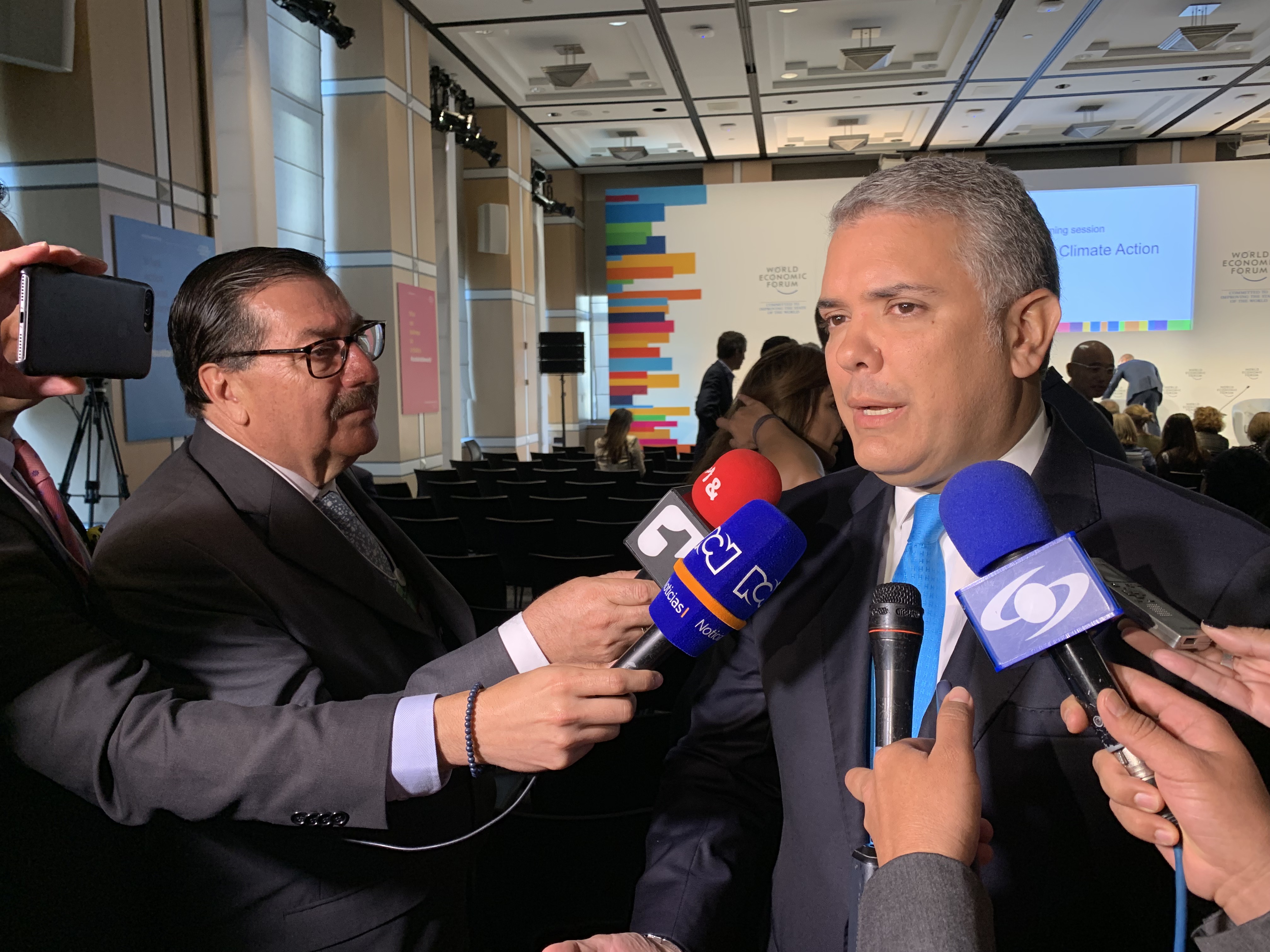
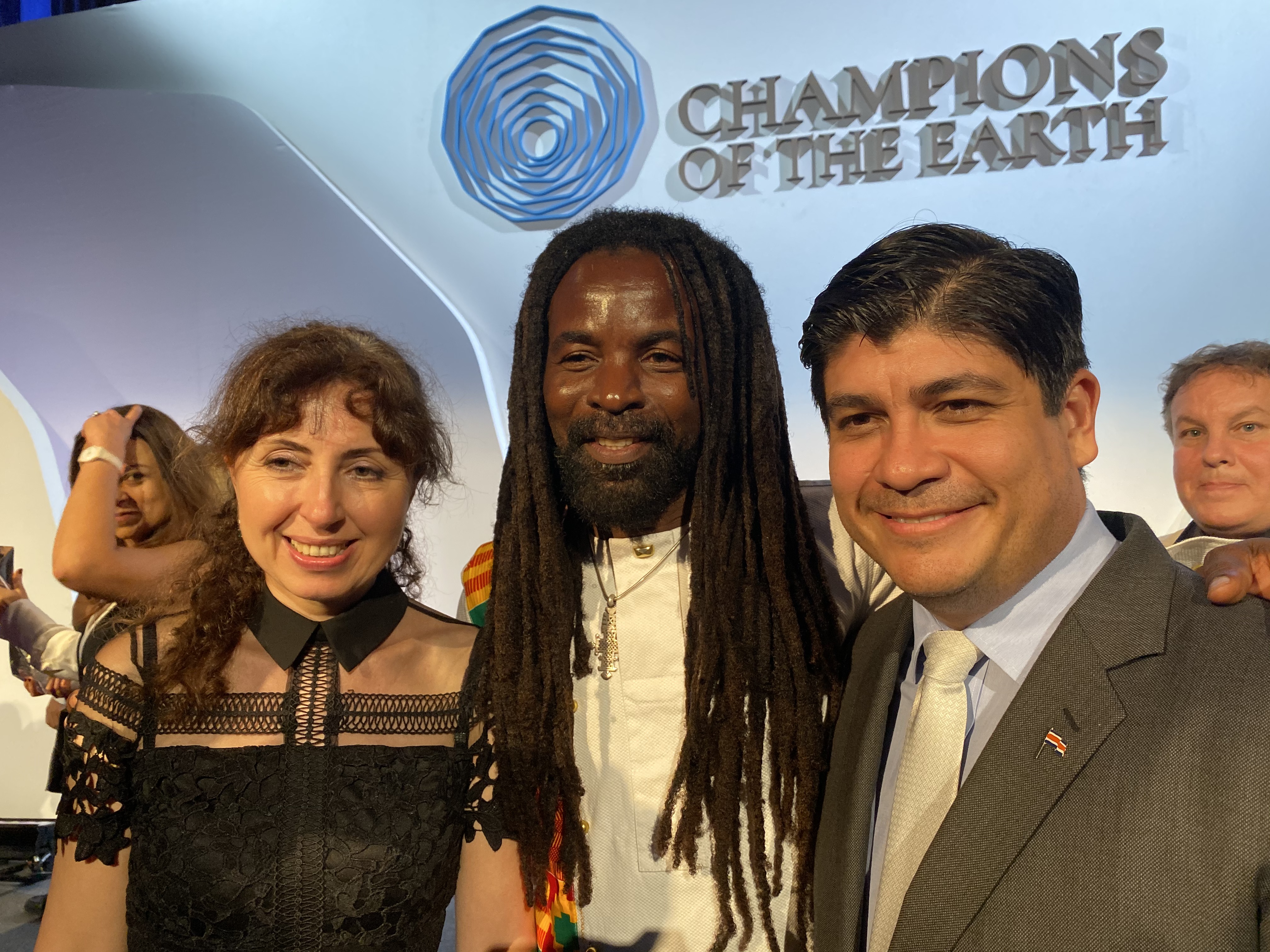
As Greta said, change is coming… whether we like it or not. The question is… what kind of change; at what speed and scale; and in what highly leveraged strategic directions to optimize transformation… Will we, as Mathis Wackernagel said in our NIW interview; use our human intelligence, creativity, and natural collaborative spirit to design healthy change OR will we sit back and allow business-as-usual, un-enlightened market forces driven by pure short term economics, reinforced by distorted subsidies and unfair, imbalanced tariff agreements…slowly lead further down our own destructive path.
Deciding to choose the former design strategy, let’s then accept our new nature reality and reflect on the role we have played in changing our climate and degrading the natural world. Then, we can choose a different future reality and recover, rejuvenate what nature and biodiversity from what is lost… and build forward together a better, brilliant future.
That said, the window of opportunity for change– for reflecting on our personal lifestyles and evolving our human choices and behavior to match the vibrant and healthy world we want for our future and our children— is NOW. In my last article of this series, I summarize a few exciting goals and easy first mover lifestyle changes we can make…and that will make a huge difference in the world… one person at a time. I’ve committed to this naturally intelligent path. Join me! LINK HERE.
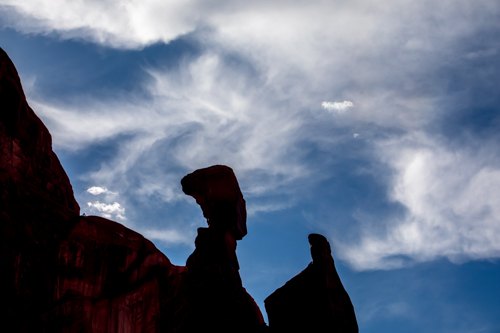
Nature’s Feedback: Remembering Who We Are
The key to transforming our future and our world is simply the continuous act of remembering who we really are– reclaiming our Natura Vera (true nature) roots.
We are intuitive beings; who innately know what is right and good.
We are nature beings; inherently tied to the phylogeny of life through our shared DNA, our interdependence on food, water, and air to maintain health. We are native beings; born within a culture—whose sustaining stories and practices that have survived over generations, teach us how to live well and balanced within and for the community. What does the reclaiming of our innate, nature, native selves then mean? How do we do this?
Simply… Reclaiming our Natura Vera means that we consciously choose to reflect on our lives- what we eat, what we wear, what we buy, how we life, move, and electrify our lives, how we spend our time, what we make, where we travel, how we travel… and we ensure that all these actions have a regenerative (to Bill McDonough, up-scale) affect.
Simply… Reclaiming our Natura Vera means to slow down enough in our every day worlds to appreciate the sun- the ultimate source of our sustenance, to thank the plants and animals for the energy-life-food-breath they exchange with us, to admire the exquisite design and durability of a tree and the elegant, symbiotic complexity of healthy, circular, zero waste ecosystems.
Simply… Reclaiming our Natura Vera means we recognize that we are highly vibrational beings, whose lifestyle chooses and actions (above) have a ripple on the world. As Jane Goodall so famously said; we all matter, each one of us…every day, in every way. And it will take all of us; our entire global village to hit our 2030 Global Sustainability Goals and Carbon Neutral future.
Indeed, the world is watching….and I believe that this exercise is reflective. In fact, when I think of climate action I imagine each one of us, 7.8 billion of us as dew drops strung out like pearls in fractal patterns intertwined in a three-dimensional spider’s web, looking at the man, woman, child in the mirror…and asking him to change his ways (Man in the Mirror, Michael Jackson). So, rather than pointing the finger at everyone else, pointing those 4 fingers back at myself… and beginning the change in me, then through sharing life lessons, through we.
Lastly, before we get into the scary bit below on the environment changing– admitting and accepting just how deep the waters are in which we stand; I want to share that in my experience- change does not need to be difficult… And in fact, life can be more blissful, healthier, more exciting, creative, liberating, invigorating, social…. basically all-around better when living a more thoughtfully sustainable lifestyle.
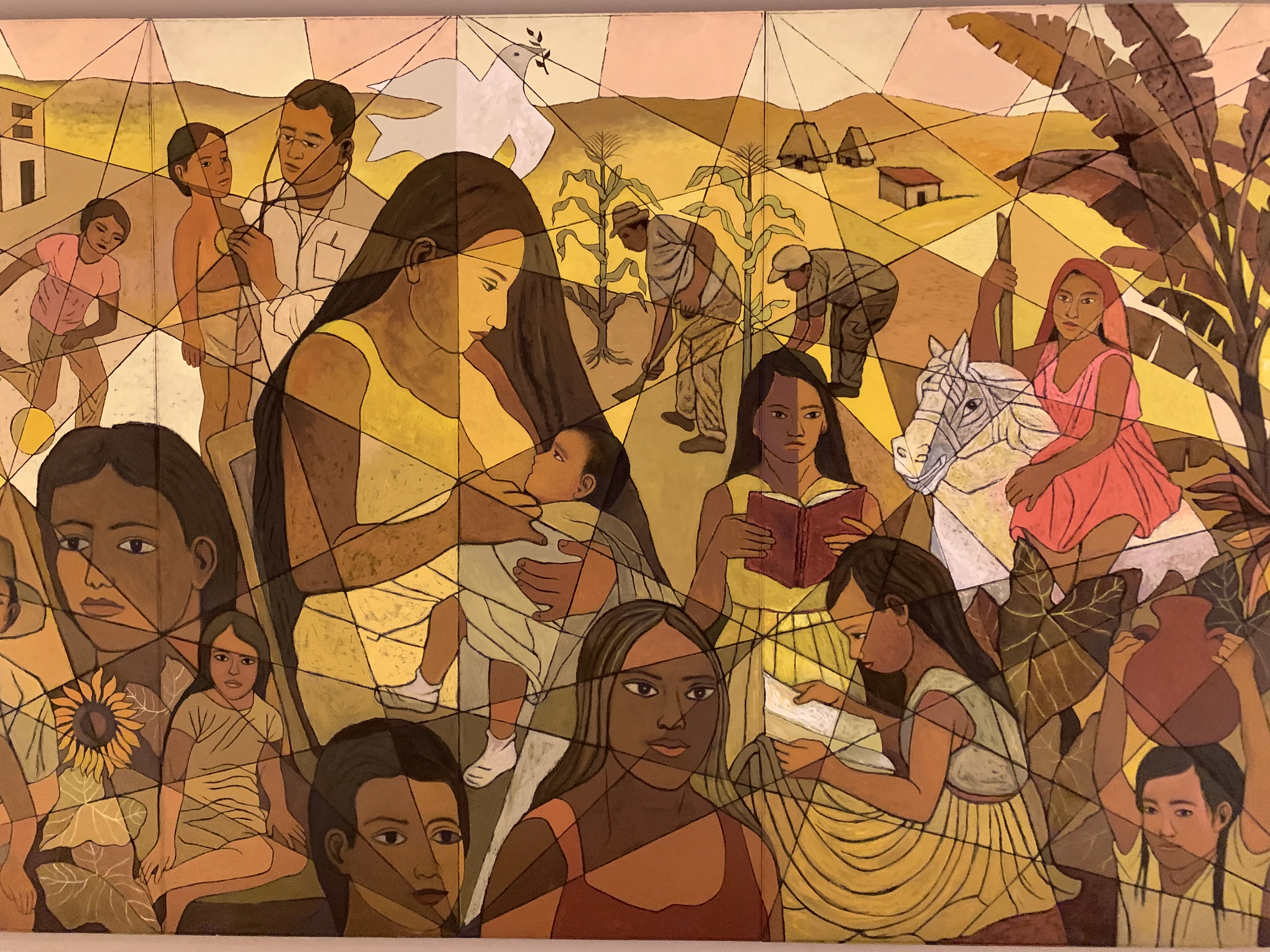
So, I dare you, read this reality-check article, featuring “our changing environment”… Read the next one- Part V to come, featuring the “solutionists”… and take the first, few steps…. I dare you!
Your life will be better for it….
Globalization 4.0: Valuing our Shared Humanity and Home Part III
Our Nature Reality: Ecosystems Changing
Ecosystems Changing: The Amazon Forests
The Amazonas Forest, literally the lungs of the planet- responsible for respiring 20% of the world’s oxygen into our atmosphere for our benefit, is on fire. Indeed, the hottest news these past weeks has been that Brazil, the Amazon River Basin, and the world are currently suffering the loss of over 1,330 m2 of forest cover due to fire since the beginning of 2019. The 40,341 fires that have burnt/are now still burning in Brazil represent a 35% increase over Brazil’s annual average and forest cover loss 76% above last year (NASA satellite data, September, 2019). Now fires reported also in Bolivia are adding fuel to the enflamed Amazonas River Basin. But the good news is that although these fires have destroyed much, they have also sparked national leaders across the Amazonas to commit to joint action. Although Brazilian President Bolsanaro rejected the $22 M USD offering from the G7 Summit leaders a week ago, aid from Chile was welcome and the seven South American countries comprising the Amazon Basin (Bolivia, Brazil, Columbia, Ecuador, Guyana, Peru, and Suriname) have now signed a pact to protect the basin, establish a disaster support network, and empower indigenous communities to manage forests. (CNN, August 27 2019) Meanwhile, Costa Rica’s government led by President Carlos Alvarado Quesada is already one of the most efficient and healthy countries in the world— tripling their economic growth, while recovering 1.1. million hectares of degraded land, protecting their watersheds, operating on 100% renewable energy, doubling the projected forested area, and advancing a robust eco-tourism industry. (Carlos Manuel Rodriguez, Minister of Environment and Energy, Costa Rica, NIW Podcast) It is no wonder that Costa Rica ranks high on the happiness, air quality, life quality indices. How do we incentivize other countries and leaders to learn from Costa Rica’s success? Indeed, that is the central question. Currently, the world invests 0.008% of our global GDP in the protection of nature; yet nature has the potential to decarbonize our world and reduce climate stress by 30% while also providing up to $123 trillion USD of value in nature’s services. (New Deal for Nature, WEF 2019)

Imagine, the Amazon Basin represents 60% of the world’s forest cover and combined with the Congo + SE Asian forests could reduce our global carbon emissions by 20%!? (Nature-based Solutions UN Summit 2019) Thus, it makes sense that it is really difficult for the international community committed to the Climate Paris Agreement to simply stand by and watch The Amazonas burn. No way… not on my watch, say many concerned scientists and citizens. Brazil and her Amazonas neighbors may be the rightful stewards of the world’s natural tropical forests. But, when irresponsible management (due to loose regulation of miners, loggers, and farmers given carte blanche authority to increase slash-burn practices in return for personal, short term profit) is largely responsible for increased forest loss of the global commons and global air pollution; then the world (whose health has also been compromised by lack of land stewardship and foresight) should rightly step up and offer healthy economic-ecological solutions and assistance for the world’s forests to be managed sustainably in the future. By the way, the same holds true for Indonesia and the incredible loss of tropical forests to slash-burn agriculture producing fires, polluting the air, starving forest communities– all to feed the world’s growing, unhealthy palm oil food (palm oil and derivatives are in nearly 70% of processed foods, NPR, Oct.10, 2019) and biodiesel diet.
And anyway, according to Mathis Wackernagel (Founder of the Global Footprint Network— working with Latin American countries for decades) it ultimately makes more economic and ecological sense from a regional wealth perspective for Brazil and countries in the Amazon Basin to pursue a policy of “Poder de Ecologico” (Ecological Power). When these countries secure their natural capital, then future generations in the Amazonas will have a renewable resource and sustainable basis for living, so they can prosper well into the future. The good news is that South American governments who have historically pursued a “Derecho a Desarrollar” (right to develop) policy; now realize that to prioritize quick economic returns without consideration for planetary boundaries only creates long term nature deficits, ultimately leading to ecological collapse – indeed, a disastrous recipe for the future. For example, President Ivan Duque Marquez of Columbia claimed that nature’s resources lie at the core of the national security agenda and that by planting 180 million trees by 2022, converting to 70% renewables for electrifying his country by 2030, and by aiming to create circular economies for the 34 million people living in the Amazon; he and fellow leadership in Latin America will “biodivert” their cities and human civilizations. (Bloomberg Business Forum, 2019)
Time to keep closer Global Forest Watch.

Ecosystems Changing: The Northern Arctic
Pivoting from the Amazonas to the Northern Arctic, we witness another dramatically, dynamically changing ecosystem on the top of the world. The IPCCC Report 2018 revealed that the earth’s average temperature has already risen by 1.80C since the 1880’s. And, the past five years have been the hottest on record around the world with expectations for heat waves to affect over 30% of the global population every year. That said, the arctic tundra represents the fastest warming region on the planet, currently warming 2x the global rate. What does that mean for the Arctic environment? Consequently, a greener Arctic with ice-free summers seems immanent, perhaps as early as 2036. The Bering Straight will be ice-free and open for global trade by mid-century; while the algae adapted to life on the ice and responsible for sustainably supporting the Arctic food web, comprised of many species of fish, seals, and whales— will disappear. As the reflective sea ice continues to melt and reveal a darker, less reflective (more heat absorbing) ocean below the sea ice surface; warming promises to accelerate…at a rate still largely unknown.
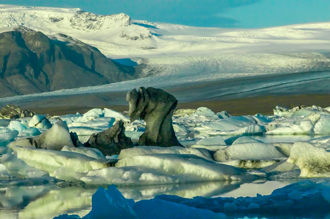
As well, the tundra landscape is melting. Permafrost- frozen soil that has historically stored rich and deep reserves of decayed carbon (carbon dioxide-CO2 and methane-CH4) is now freeze-thawing to 10 feet, consistently-persistently in tundra environments, which previously experienced melting only a few inches deep. For example, on the Siberian tundra in places like Dubanny Yar, abrupt thaw is accelerating the release of trapped carbon and methane (CH4)- 30x more potent as a greenhouse gas in the atmosphere than C02. Underground thawing is happening sooner, deeper, and more extensively. And, freeze-thaw cycles could unlock 16,000 gigatons of carbon in the previously frozen soil. (September 2019, National Geographic) Again, carbon released into the atmosphere via permafrost melt is not yet accounted for in the global climate models (GCM). I remember nearly 15 years ago in conversation with Tom Lovejoy (ecologist, tropical forest expert) at his house, where he showed me for the first time, projections of permafrost melt… and warned back then, that permafrost melt would become just as important a driver of climate change as deforestation.
Tom’s epiphany always haunted me… I always believed him.
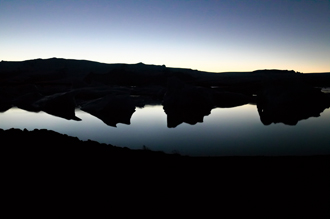
Lastly, the boreal forests are migrating north and fire has become more prevalent in these ecosystems, which is highly anomalous for the arctic north. What does this mean for the ecology of the arctic tundra? Bird migration is shifting. Caribou herds are confused as diets are disrupted by more frequent rains freezing their nutrient rich lichen and moss- based forage; shifting their meal choice to less nutritious seaweed. Beavers are also migrating north and building more dams from fallen trees; creating small ponds and accelerating an advanced permafrost melting ecological feedback loop. (September 2019, National Geographic) True, change is inevitable. Ecosystems are naturally dynamic; but the pace and scale of change is unprecedented…and indicative of a transformative system change at an evolutionary speed we can’t yet comprehend; we have ever witnessed nor are entirely prepared to adapt to…ecologically, politically, or economically. Indeed, these are interesting times.
Further, as China, Russia, Canada, the US, Greenland (still the largest island, still the autonomous territory within the Kingdom of Denmark, and still not for sale despite Trump’s resort-oriented aspirations) and the other Arctic nations continue to eye the warming Arctic as a new opportunity to increase mineral, oil, gas exploration and open new global shipping routes; we can additionally expect greater carbon emissions also from these operations- if powered by fossils fuels and not the hydrogen fuel of the future.
Time to keep track of the hard, but softening Arctic Facts.
Ecosystems Changing: The Mountains and High Alpine
During the UN Summit and in the midst of the launch of a NEW Partnership for mountain countries, I received a news flash from a friend about a dangerously large crevasse splintering precariously on the Panpincieux Glacier on the peak of the Grandes Jorasses, part of the Mont Blanc massif in the valley above my beloved mountain community of Courmayeur. (Sept. 25, 2019, NY Times) I know this peak and glacier, exactly. Apparently a block of about nine million cubic feet of glacial ice is opening much larger than normal due to a warmer, longer summer. Part of the team monitoring the Mont Blanc glaciers since 2013, Dr. Giordan fears that a collapse of that large a glacier could barrel down to the bottom of the valley floor, endangering everyone on the road and valley. (Sept. 25, 2019, NY Times) Thankfully, I know Planpincieux is a summer community. And, most winters the upper valley is shut down due to frequent avalanche activity in the surrounding steep mountains. As well, the alpine community there is not new to hazards in the high country. That said, rapid glacial warming in this century due to human-caused excess of greenhouse gases in the atmosphere and the exacerbation of warming due to the dark (light absorbing, ice-melting) soot from Mont Blanc tunnel (mostly truck) traffic that now coats the Mont Blanc massif, is causing the splintering of the Planpincieux Glacier… and other glaciers, worldwide.
Further, as air pollution from greater human development in mostly urban environments and more extensive, intensive transportation and traffic congestion, respectively finds its final resting place as dark, heat-absorbing dust on the top of previously-reflective glaciers… we can expect more frequent reports about mountain glaciers and precarious ice, worldwide. Clearly, warmer summers will continue to melt mountain glaciers and make them more susceptible to fracturing, presenting a real threat to mountain communities (representing nearly 15% of the world’s population, 1 billion people) and the alpine-mountaineering-skiing tourism industry that has become an essential economic artery for surviving-thriving mountain resort communities. Winter tourism across the Swiss Alps has already decreased 24% in the last decade due in large part to climate change. (July 2019, Reuters)
Further, while the glacial ice itself is dangerous; bodies of water that often live within the structure of the ice could also be released with massive glacier melting events, causing significant flooding to down-glacier mountain valley communities. These GLOFS (glacial lake outburst floods) are now growing hazards in Bhutan, Nepal, Peru, India, Bolivia…as well, across the Himalayas, European Alps, the Kyrgyr Republic Tien Shan mountains… and so forth; as the glacier ice has served over the centuries like a dam, containing these large reservoirs of water. Not only would a GLOF event be physically catastrophic to all mountain villagers in the lower valleys; but the long term loss of stored water in the lake and glacial ice would also detrimentally impact the agricultural farmers, many people already marginalized, in the long term. ( Mountain Partnership, Global Meeting, 2019) When I was a graduate student at ETHZ, studying mountain environments and climate impacts to vegetation; we referred to the mountains as “the water towers of the world”… as mountain watersheds provide 50% of the world’s freshwater resource… not only for drinking water, but also agriculture.
Recognizing the growing threats to mountain communities due to climate and land use change, the Friends of the Mountains Council formed and launched their mission statement at the UN Summit. The Council is an association of country leaders at the ministerial level in countries with people living in the mountain regions. In this climate changing, ever developing world; these countries have decided to ban together to share knowledge, resources, and best practices for restoring mountain ecosystems, adopting climate sensitive agricultural practices, and reducing mountain people’s exposure to climate risks by designing climate resilient community education programs, safeguards, and precautionary protocols. Already, most people living in isolated, mountain regions are among the world’s most marginalized poor and most vulnerable to climate change. That said, my experience of mountain people (having traveled and lived in many alpine villages in Europe, US, Asia, Middle East) is that there is a true sense of community, communal sharing, and natural response to neighbors in need. Thus, the Friends of Mountains Council will likely be very effective and practical because a true concern for the wellbeing of others across the mountain world already exists…and there is power –resilience-intelligence in the collective.
Ecosystems Changing: The African Savannah
When I think of the African Savannah, my heart and mind go back to safaris in Tanzania’s Serengeti and blood red sunsets across the Ngorongo, the sliver of ice likely gone by now on Mt. Kilimanjaro’s ridgeline, the proud, svelte Maasai Mara warriors… and Nobel-Peace Prize honoree, Wangari Maathai. Although gone for almost a decade, Wangari’s powerful, pure voice and empowering presence still lives within my memories of her. (Personal note: The first film I ever produced for a UN Climate Change meeting had been taken off the main program and re-assigned to a side program. I was sitting next to Wangari when a technical lull in the main program presented the perfect opportunity for me to slip in my renewable energy future’s film as a trailer to the main cultural program. I remember turning to Wangari with the intention ask the tech team to run my film without all the formal protocol…I was afraid to misstep and get in trouble. Wangari looked sternly at me and then said, laughing, “Do you think I got where I am with my reforestation programs in Kenya sitting in my seat? Go get your film on that screen.” … I did. And I have been producing short films in support of the UN Global Goals ever since.)
When I visit these lands that have become desertified— with parched, cracked, dead dirt, dust everywhere, and dried up lakes; I feel myself in the middle of an old David Bowie music video or a Salvador Dali painting. It’s a strangely surreal and eerie dead silent landscape. In my NIW interview with Houtou Ibrahim; I can picture through her story…the Lake Chad region once flush with color and vibrant life and now desolate and dry. Indeed, soil samples of the larger African savannah reveal that it was a lush forest, now turned parched desert. Indeed here, Nature has shown us that the erosion of soils due to tree-less exposed lands, abnormal warming-drying climate trends across arable land, increased severe and multi-year drought; combined with sub-optimal agricultural and forest practices—are all driving the desertification of the African savannah (and other grassland savannahs, worldwide). (UN Convention on Combating Desertification 2019) Desertification is not only an ecological issue; but also a human concern. Desertification of viable agricultural land is one of the leading drivers of a decrease in agriculture productivity, accounting for a loss of nearly 2%-6% (The Future of Food, FAO). Already, desertification of the African savannah is a real concern for one of the largest growing populations of young people in the world. This is not a small number, as youth 25 years or younger represent over 50% of the population across the African continent. Further, 800 million people are already malnourished, worldwide. (WEF Innovation in Agriculture Report 2019)
If in the future we expect our world population to grow to 11.6 billion people by 2050 and we know that we will have to produce 70% more food on 50% less land in order to feed everyone while protecting our natural capital; then we better get cracking now on revitalizing our savannah soils, re-planting indigenous trees- Great Green Walls and infinite Greenbelts of them, and optimizing agricultural practices for healthy, efficient, regenerative food production.
The Great Green News is that African leaders, like Ethiopia’s visionary Prime Minister Abiy Ahmed has found within his country the political will to align with Ethiopia’s Tree Aid extraordinary Green Legacy Initiative to plant 4 billion trees in less than a year. Two days after Earth Overshoot day- where as a global society we have expended our nature bank account; the people of Ethiopia showed the world (and shared on social media) that by activating “people power” they could plant 350 million trees in one day as country. And, as one inspired act leads to the next; other countries in the region are aiming to break that new world record for tree planting, even as proud Ethiopians continue to spark Wangari’s Greenbelt Movement and build the greatest world wonder, a Great Green Wall across the 8,000 km of the continent of Africa … creating jobs, improving agriculture, and mitigating abject poverty along the way.
Then, the Greatest Global Green News is that following Ethiopia’s pro-action to rejuvenate forests and the massive social media overflow subsequent; we learned again that everyone loves trees…. So now there is a tree-planting craze worldwide… Now it is hip and cool, and not just at a government level, but in a very grassroots, boots-on-the ground way… to plant a tree… and to plant 1 million trees. As one example, a social good APP in China was recognized at the UNEP Earth Champions event as inspiring 10 million people to plant trees across a degraded, desertified landscape in China. And of course at the same UNEP award’s ceremony, Costa Rica was also honored as the Earth Champion of 2019 for its transformative reforestation ecological-economic model and mission that other countries are starting to recognize and adapt. (UNEP Earth Champions 2019)
That’s the humanity Pope Francis speaks about in Laudato Si. That’s the humanity we were born to be… to build the greatest natural- human wonder, and to see Wangari’s Global Greenbelt Movement manifest across the Sahel… and the world. Power to the people, plants, and trees…and people planting trees.
Ecosystems Changing: The Ocean
From the Great Green Wall to the Great Barrier Reef; both living wonders play significant roles in the Great Global Climate Change narrative. Both serve as extraordinary natural stores for atmospheric carbon. Both now require diligent human attention and commitment to active regeneration and conscious, consistent, non-conditional reduction of polluting and forest-reef-degrading activities, which would counteract the positive, natural capacity of these wonders to exist, expand, and enhance our world. To start, it’s high tide time to ask some pretty direct questions about our human impact on the ocean and current ocean health.
First, how could the world’s oceans be reaching a planetary-scale threshold for absorbing excess human-generated carbon pollution in the atmosphere? Well, if we as a 7.8 billion person strong human civilization emit nearly 110 million tons of carbon every day (IPPC Report 2018) and generate the equivalent of 500,000 Hiroshima-size bombs (Safeguarding Our Planet, WEF 2019); then even the seemingly infinite ocean of wisdom- currently responsible for sinking 30% of that excessive carbon and 93% of that excessive heat energy… will become full.
Second, how has the ocean environment been fairing in this warmer, enriched-carbon water world? Warming oceans are largely responsible for extraordinary rates of acidification greater than any time in the last 300 million years (IPPC Report 2018)—contributing significantly to the destabilization (likely disappearance) of coral reef ecosystems, like the Great Barrier Reef. Warming oceans have disrupted the flow of the gulfstream, the water cycle on sea and land, the global weather, and nutrient exchange throughout the 3D ocean ecosystem. Scientists are closely observing changes in the circulation of the global ocean conveyer belt- the circulation of cold and warm water currents that move nutrients from the ocean deep to surface waters. (See Climate Risks and Responsibility Article, Thrive Global ) It’s unclear how the slowdown (shutdown) of such an important circular ecology (economy) natural earth system process will affect life below the ocean surface, as well as, above the ocean surface. Clearly, as sea ice melts and sea levels rise, the inundation of shoreline communities and agricultural lands will have a dramatic impact on the 800 million people living in the 570 coastal communities (including my own community in Northern California). (IPPC Report 2018)
Third, how have the marine wildlife communities been faring in a carbon-rich ocean environment? Warming oceans have caused universal changes in the behavior-food web relationships-migration patterns- community dynamics-shell-development for marine wildlife. Mission Blue, driven by Dr. Sylvia Earle, and responsible for tracking ocean health and marine wildlife for decades has now launched a global citizen effort to maximize the extent of marine protected areas over the next decade. If/when we reach our global goal of reserving at least 30% of the ocean as Marine Protected Areas (MPA); then it will be largely due to a few passionate and persistent ocean advocates; like Sylvia Earle, Enric Sala, Nina Johnson, Peter Thomson, Prince Albert of Monaco, Marc Benioff (see NIW interviews)… and others. That said, the pursuit of ocean conservation is not entirely a selfless mission; it’s also a selfish human mission. Marine wildlife (fish) provide critical protein to 3 billion people, worldwide and innumerable sea birds, marine mammals. And, if major fish stocks worldwide have decreased since 1970 by nearly 50% (in my lifetime); then conscious and critical conservation of marine wildlife and the expansion of marine protected areas to more than the 7% protected to day is essential for our own survival.
And then, there’s the tragic and currently culturally popular ocean narrative on plastic. This ocean plastic story gained traction over the past two years– stoked by National Geographic’s bold and brilliant cover stories on ocean plastic (NatGeo 2018), which thankfully drew more attention to ocean health than any other ocean conservation effort on a global scale. Why? Ultimately, we look to the ocean as a resource for seafood…and we call the millions of marine wildlife- collectively “fish” (a lesson I learned from Syliva Earle), measuring their worth (or by-catch) in tons. And, when we begin to realize that as we are eating and digesting our meal of “fish” from an over-polluted, micro-plastic laden environment… all of the sudden it dawns on us that our single-use, disposable plastic craze since the 1950’s Era of convenience and consumer consumption of “stuff”– branded and bound in plastic packaging… has created an universal echo… and come karmic-like back to impact our own health and biology. Perhaps if we appreciated the ocean wild and ocean wildlife, like Sylvia Earle or Nina Johnson or Enric Sala… or countless other committed ocean biologists, explorers, divers, surfers… small island nation dwellers…then we wouldn’t be inundated by plastic pollution in our world’s oceans.
But, the reality is that over the past 50 years plastic use has increased 20 times…and most of that plastic has found its way – predominantly via 5 major world rivers; into the ocean. Thus, marine plastic pollution alone has increased tenfold since 1980, affecting at least 267 species, including 86% of marine turtles, 44% of seabirds and 43% of marine mammals. (Davos Ocean Alliance, 2019) Curiously, by 2050 at current rates of plastic use and waste disposal there may actually be more plastic (per ton) in the world’s oceans than fish. (NIW interview with Peter Thomson, Special Envoy for the UN on Oceans)
Sadly, even when we are able to stop the influx of future plastic in the ocean, we will still also need to figure out innovative, entrepreneurial, nature-loving solutions to rid the oceans of micro-plastics—from all synthetic poly-carbon materials we use, wash, wear, waste… and eventually weave into the fabric of marine wildlife. Imagine, from the time fish hatch from their eggs as young fry in ecologically rich surface slicks, they are exposed to and ingesting micro plastic, day one (May 2019, National Geographic). Most of us know about the Five Plastic Gyres across the world’s oceans– the one in the Pacific Ocean, measured as the same size as the State of Texas. And, that’s just in 2D. The ocean exists in 3D… and new artificial ecosystems are forming within these plastic non-paradises…that promise to decimate populations of marine wildlife in the next half-century if we are not careful. Listen to our NIW Interview next week with Bill McDonough, who is one of the leading authorities on plastic pollution and designing for a circular, zero waste economy.
Time to become more consciously committed to Ocean Conservation.
Ecosystems Changing: Our Entire Natural World is at Risk
Climate Change
Twenty of the warmest years have occurred since 1995 with the 5 hottest years occurring these past 10 years. (NOAA) And we are not the only ones feeling the heat; but every ecological community on earth has been impacted on a planetary scale by climate change. Extreme weather events, record hot summers, and increased intensity/frequency/scale of natural disasters; fires, floods, hurricanes appear the new normal in our Age of the Anthropocene. Is this the memory and legacy we wish to leave future generations?
Biodiversity Loss
The rate of transformation of wildlife habitat and wild nature during the past 50 years is unprecedented in human history. On average, we’ve witnessed (IUCN, WWF Intl, TNC, CI) an extraordinary 60% decline in the size of populations of mammals, birds, fish, reptiles, and amphibians in a little over 40 years (WWF’s Living Planet Report 2018). As well, we have lost nearly 53% of mammalian wildlife biodiversity to extinction in the past century. (Our Planet) The direct drivers of change in nature with the largest global impact are: changes in land and sea use; direct exploitation of organisms; climate change; pollution; and invasion of alien species caused by urban development, increased population growth, and ever-escalating demands on finite natural resources. What is the impact we want to have on the natural world that sustains our vital health, wealth, and wellbeing?
Ecosystem Change
In total, human activity has “significantly altered” 75% of the earth’s landmass and 66% of the earth’s oceans. Population growth—we are now 7.8 billion people, has already placed extraordinary demands on more than 33% of land and 75% of freshwater resources. By 2050, if we expect the human population to grow to 9.8 billion people; we already know that we will need to increase agriculture productivity by 70%. (Innovation with a Purpose, WEF 2019) How are we going to do that on less land to ensure that we also retain 50% of the natural world in the biosphere? Imagine our human impact on living ecosystems if we don’t invest in our regenerative future, innovate forward, and moderate (reverse) our population growth trend. There is a reason that educating young girls is one of the top priority Project Drawdown goals to decarbonize our human activity and regenerate nature. By investing in the quality of life, health, nutrition, education for young girls around the world, and especially in emerging economies; we are able to bend the population curve and mitigate our human impact on natural earth systems, so larger wild lands can recover. Do we really live as if we believe we don’t inherit the earth from our ancestors, but borrow it from our children?
Nature’s Gifts
We only have One Planet. The Earth is our only home. There is no Plan B or Planet B or other Planet in which to live, grow, and be. We belong to this Earth. We belong to the stream of life that has given us life and the genetic keys to leave a positive imprint on the world.
During the industrial revolution; our perception of nature was as an infinite resource to feed into our increasingly mechanized, metallic worlds of growing convenience. Now, our perception has changed. We realize that nature is not only the source of raw resources to build our human presence in the world. We are beginning to understand that the biosphere is a living and breathing interconnected ecological community that operates according to principles of reciprocity. Thus, our relationship to the natural world need be dialectic and symbiotic and balanced; or…. As we are discovering, entire ecosystems collapse.
July 27, 2019, the Global Footprint Network announced that we had already hit our Earth Overshoot…that we had extracted our annual budget of natural capital already that day. Now, until December 31, 2019; we are running a nature debt that can only be re-paid if we now invest in the regeneration of natural systems, aggressively aim toward a carbon neutral world, reduce our extractive use of nature, and replenish what resources we take. A RE-Valution of nature’s gifts and services is long overdue. (NIW Interview with Mathis, President of the Global Footprint Network) Will we be the generation that figures out how to balance our economic-ecological checkbook and put us back on track with nature?
“We have picked a fight with nature. And now we need to make peace with nature.” Amina Mohammed, Deputy Secretary General, UN 2019


